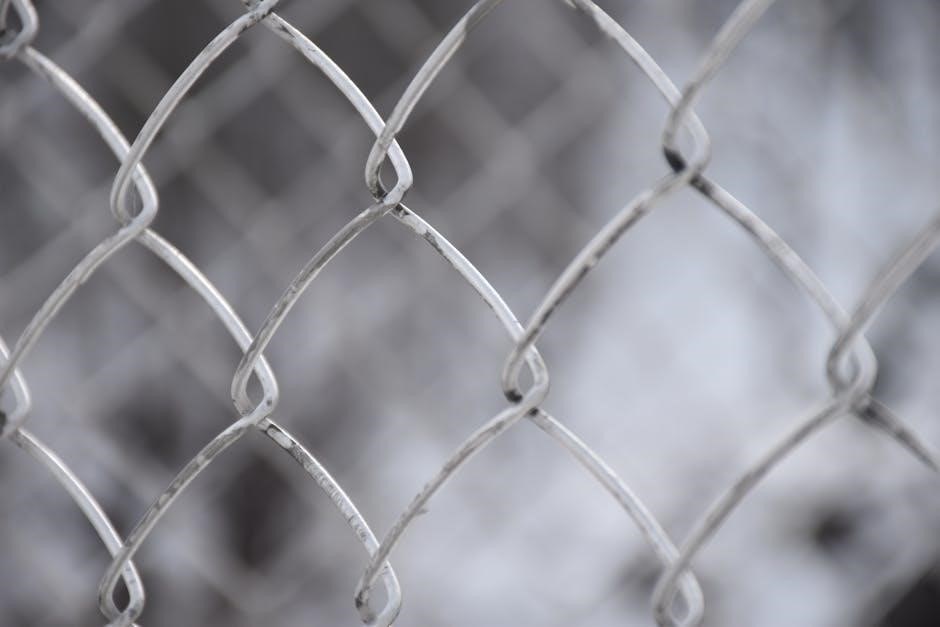Chain Guide and Bash Guard: A Comprehensive Guide
This comprehensive guide dives into the world of chain guides and bash guards, essential components for mountain bikers seeking to enhance drivetrain reliability and protect their valuable equipment․ Whether you’re navigating rocky climbs or tackling challenging descents, understanding these components is crucial for a smooth and uninterrupted ride․
In the demanding world of mountain biking, where trails are often unforgiving and obstacles abound, the drivetrain is particularly vulnerable․ This is where chain guides and bash guards come into play, acting as crucial protective measures for your bike’s vital components․ A dropped or snapped chain can lead to a scary crash or annoying trail side chain installs that cover your hands in grease․ Chain guides and bash guards offer superior protection and retention, without breaking the bank․ Many designs and mounting styles exist․
Chain guides are designed to keep the chain securely in place on the chainring, preventing it from derailing during rough sections of trail․ Bash guards, on the other hand, protect the chainring from impacts with rocks, roots, and other trail debris․ Some models even combine both a chain guide and bash guide into one to reap the benefits of both designs․
Together, these components enhance drivetrain reliability and performance, providing riders with the confidence to tackle challenging terrain without the worry of mechanical failures․ They are cheap insurance․
Understanding the Purpose of Chain Guides
The primary function of a chain guide is to maintain chain retention, especially when navigating rough and technical terrain․ When riding through challenging sections, the chain experiences significant vertical movement, increasing the likelihood of it jumping off the chainring․ A chain guide acts as a barrier, keeping the chain aligned with the chainring and preventing derailment․ The chain will be getting thrown in every direction between the chainring and the cassette, but as long as the chain guide is doing its job, you can keep pedaling․

Chain guides are particularly beneficial for riders using 1x drivetrains, where the absence of a front derailleur leaves the chain more susceptible to dropping․ They provide an extra sense of security, hopefully ensuring that you won’t ever drop your chain․ They also contribute to a quieter ride by minimizing chain slap against the frame․ Some models even combine both a chain guide and bash guide into one to reap the benefits of both designs․
Ultimately, chain guides enhance drivetrain reliability and allow riders to focus on the trail ahead without worrying about chain management․
Understanding the Purpose of Bash Guards
Bash guards serve a distinct purpose: protecting the chainring from impacts with rocks, logs, and other trail obstacles․ Mountain biking often involves navigating challenging terrain where the chainring is vulnerable to damage․ A bash guard acts as a shield, absorbing the force of impacts and preventing bent or broken chainring teeth․ And well, smashing the bottom of your frame directly into a rock is less than ideal, but a bash guide can stop that from happening․
This protection is especially crucial for riders who frequently encounter rocky or technical trails․ By preventing chainring damage, bash guards help maintain smooth shifting performance and extend the life of the drivetrain․ They are a worthwhile investment for riders who value the longevity of their components․ But even on chunky stuff, i have never hit my chainring on stuff․ though despite riding hard and having competitive times compared to friends, my bikes last a lot longer․
While a bash guard doesn’t prevent the chain from falling off, it’s a vital accessory for riders tackling rough terrain and obstacles․ Buy the bash guard and chain guide combo, its cheap insurance․ Be safe, Rod․
Types of Chain Guides
Chain guides come in several designs, each catering to different riding styles and drivetrain configurations․ One common type is the top guide, which mounts above the chainring and prevents the chain from bouncing upwards and off the teeth․ These are particularly effective for preventing chain derailment on rough terrain․ I originally purchased the chain guard after I dropped a chain on my 2019 Bronson after a stick derailed the front chain ring․
Another type is the dual guide, which features both a top and bottom guide to provide maximum chain retention․ These are often used in downhill and enduro riding where the risk of chain drop is high․ But it is like a helmet to me, I wont go riding without one just because I think I will be fine․ Single (bottom) or double (above the chainring & bottom) chain guide, with or without bash․
Some chain guides also incorporate a bash guard for added chainring protection․ These combo units offer the benefits of both chain retention and impact resistance․ I hit the bash guard frequently․ The V2 Compact Chain Guide is light, simple, offers excellent chain security and mud clearance with silent retention․
Types of Bash Guards
Bash guards are designed to protect the chainring from impacts with rocks, logs, and other trail obstacles․ They come in various shapes and sizes to accommodate different chainring sizes and mounting standards․ A common type is the full-coverage bash guard, which encircles the entire chainring, providing maximum protection․ I put an MPR bash guard on it to protect chain/chain ring from all the rock piles and obstacles we deal with but no guide needed․
Another type is the direct mount bash guard, which attaches directly to the frame using ISCG tabs․ These are often lighter and more compact than full-coverage models․ I smash my bash guard often enough and the chain guide offers a bit of security at minimal weight․
Some bash guards are integrated into chain guides, offering a combination of chain retention and impact protection․ Whether youre navigating rocky tech climbs or tackling tough descents, rest assured your drivetrain is safeguarded against damage․ Some models even combine both a chain guide and bash guide into one to reap the benefits of both designs․
Material Composition and Durability

The material composition of chain guides and bash guards significantly impacts their durability and performance․ Aluminum is a popular choice for bash guards due to its strength-to-weight ratio․ Reinforced Nylon bash guards and a back plate cut from 8mm thick 7075-T6 aluminum, ensure that the OneUp Bash Guide can handle the biggest hits, but at a weight of only 68g (32-34t) you may forget its even there․
High-grade aluminum alloys, such as 7075-T6, offer excellent impact resistance and stiffness․ For chain guides, materials like nylon, polycarbonate, and aluminum are commonly used․ These materials provide a balance of durability, flexibility, and weight․ The choice of material depends on the intended use and the level of protection required․
When selecting a chain guide or bash guard, consider the riding conditions and the types of impacts you’re likely to encounter․ Reinforced materials and robust designs are essential for aggressive riding and challenging terrain․ Ive got a Unite top guide and bash, the Mrs a One Up․ Both are great, you dont notice them until they do their job and protect your chainring․
Mounting Standards: ISCG, ISCG 05, and Others
Chain guides and bash guards utilize various mounting standards to ensure compatibility with different bike frames․ The most common standards are ISCG (International Standard Chain Guide) and ISCG 05․ These standards define the bolt pattern and spacing around the bottom bracket shell, allowing for secure attachment of the chain guide or bash guard․
ISCG 05 is a revised version of the original ISCG standard, offering improved stiffness and compatibility with modern frame designs․ ISCG-05 is a m․․․ Some frames may also use a direct mount system, which integrates the chain guide or bash guard directly into the frame’s design․
When selecting a chain guide or bash guard, it’s crucial to verify the mounting standard compatibility with your bike frame․ The OneUp Bash Guide stands out from the crowd in three different ways․ First, it can be installed with a single 4mm hex key, and that install can take place without removing the cranks․ Simply bolt the bash guard to your ISCG05 tabs, then figure out how many spacers you need to center the chain guide over your chainring without rubbing, bolt ․․․
Compatibility with Different Chainring Sizes and Shapes (Oval Compatibility)
Ensuring compatibility with your chainring size and shape is paramount when selecting a chain guide or bash guard․ Chain guides are typically designed to accommodate a specific range of chainring sizes, so it’s essential to choose one that matches your setup․ The smaller bash guard fits the 30-tooth perfectly and the middle size works perfect for the 34-tooth․ The larger looks like it would do the․․․
Furthermore, the emergence of oval chainrings has introduced a new dimension to compatibility considerations․ OVAL BASH GUIDE ISCG05․ Revolutionary chain guide on the market specially made for OVAL chainring to protect it from hits and keep chain on the chainring OVAL Bash Guide ISCG05․ Revolutionary chain guide on the market specially made for OVAL chainring to protect it from hits and keep chain on the chainring

Oval chainrings, also known as elliptical chainrings, alter the effective gear ratio throughout the pedal stroke, providing potential benefits in power delivery and traction․ However, their non-circular shape can pose challenges for chain guide compatibility․ The first chain guide designed to be both Oval and Boost compatible Designed for frames with 2 ISCG05 tabs only (Evil, Rocky Mountain, etc)․ Should not be used on frames with 3 ISCG05 tabs 2․5mm chainline adjustment Includes 3 different․․․
Installation Process
Installing a chain guide and bash guard typically involves a straightforward process, but it’s crucial to follow the manufacturer’s instructions carefully for optimal performance and safety․ The first chain guide designed to be both Oval and Boost compatible Designed for frames with 2 ISCG05 tabs only (Evil, Rocky Mountain, etc)․ Should not be used on frames with 3 ISCG05 tabs 2․5mm chainline adjustment Includes 3 different․․․
Begin by identifying the mounting standard on your frame, such as ISCG, ISCG 05, or direct mount․ Ensure that the chain guide and bash guard you’ve chosen are compatible with your frame’s mounting standard․ The OneUp Bash Guide stands out from the crowd in three different ways․ First, it can be installed with a single 4mm hex key, and that install can take place without removing the cranks․ Simply bolt the bash guard to your ISCG05 tabs, then figure out how many spacers you need to center the chain guide over your chainring without rubbing, bolt ․․․
Next, remove your cranks and bottom bracket if necessary to access the mounting points․ Attach the chain guide and bash guard to the frame, ensuring proper alignment with the chainring․ Tighten the bolts to the manufacturer’s specified torque settings․ After installation, verify that the chain guide doesn’t interfere with the chain’s movement and that the bash guard provides adequate protection for the chainring․
Benefits of Using a Chain Guide and Bash Guard Combo
Combining a chain guide and bash guard offers a synergistic approach to drivetrain protection and performance enhancement for mountain bikers․ The chain guide prevents dropped chains, ensuring uninterrupted power transfer, especially on rough terrain․ The reinforced Nylon bash guards and a back plate cut from 8mm thick 7075-T6 aluminum, ensure that the OneUp Bash Guide can handle the biggest hits, but at a weight of only 68g (32-34t) you may forget its even there․
Simultaneously, the bash guard shields the chainring from impacts with rocks, roots, and other obstacles, preventing damage that could lead to costly replacements․ With my current trail riding, I will not go without a bash guard and chain guide․ I hit the bash guard frequently․ I dont know 100 that the chain guide is necessary, besides the fact that my bike came with one․ But it is like a helmet to me, I wont go riding without one just because I think I will be fine․
Together, they minimize the risk of mechanical issues, allowing riders to focus on navigating the trail with confidence․ Biggest pros of bashguard and going 1xwhatever or 2xwhatever is the chain guide․ On my 3x setup, I was dropping a chain a few times a ride in the rough sections․ On my 2x, the guide keeps it nice and tight․ Also quiet․ More clearance and not worrying about bending the teeth on a rock or a log are added benefits․
This combination provides peace of mind, knowing that your drivetrain is well-protected against the rigors of aggressive riding․ Some models even combine both a chain guide and bash guide into one to reap the benefits of both designs․

When are Chain Guides and Bash Guards Necessary?
Chain guides and bash guards become essential when tackling challenging terrain where dropped chains or chainring damage are likely․ A chain guide can be useful if you ride fast through rocks․ It didnt happen often, but I occasionally dropped a chain even with a clutch on the rear mech․ They are particularly beneficial for aggressive trail riding, enduro, downhill, and any discipline involving rough, technical trails․ If you frequently encounter rocky sections, roots, or drops, a bash guard is crucial to protect your chainring from impacts․
For riders using single-chainring (1x) drivetrains, a chain guide provides added security against chain derailment, ensuring consistent power delivery․ The chain guides job is to keep the chain inline with the teeth on the chainring so that as you continue pedaling, the chain will continue to fall in to place․
While a bash guard doesnt prevent the chain from falling off, its a vital accessory for riders tackling rough terrain and obstacles․ Serving Similarly, if you often ride in areas with loose debris or mud, a chain guide helps maintain chain alignment and prevents it from being thrown off by trail obstacles․
Ultimately, the necessity of these components depends on your riding style and the types of trails you frequent․ If you prioritize reliability and protection in demanding conditions, investing in a chain guide and bash guard is a wise decision․
Maintenance and Care
Proper maintenance and care are crucial for ensuring the longevity and optimal performance of your chain guide and bash guard․ Regularly inspect them for signs of wear and tear, such as cracks, bends, or loose hardware․ Check the mounting bolts to ensure they are properly tightened to the manufacturer’s specified torque․
After each ride, clean your chain guide and bash guard with a mild detergent and water to remove dirt, mud, and grime․ Pay close attention to any moving parts, such as rollers or sliders, and lubricate them with a suitable chain lubricant to maintain smooth operation․ For bash guards, check for any dents or damage caused by impacts and address them promptly to prevent further issues․
Periodically inspect the chain guide’s alignment with the chainring and adjust as needed to ensure proper chain retention․ If your chain guide features adjustable components, such as height or angle settings, make sure they are properly configured for your specific drivetrain setup․ By following these simple maintenance tips, you can keep your chain guide and bash guard in top condition and enjoy reliable performance on the trails․
I smash my bash guard often enough and the chain guide offers a bit of security at minimal weight․
Top Brands and Models on the Market
The market offers a diverse range of chain guides and bash guards from various reputable brands, each with its unique features and performance characteristics․ OneUp Components stands out with its V2 Chainguide and Bashguard, praised for its ease of installation and compatibility with oval chainrings․ e*thirteen is known for its high-quality chainguides designed for superior protection and chain retention․
MRP offers a range of bash guards and chain guides, including models with direct mount bash options for added protection․ For riders seeking lightweight options, brands like Funn offer versatile chain guides designed for optimal chain retention․ Nukeproof is another popular choice, with models recommended by experienced riders for their durability and performance․
When selecting a chain guide or bash guard, consider your riding style, terrain, and drivetrain setup․ Look for models that offer the appropriate level of protection and adjustability for your needs․ Reading reviews and seeking recommendations from other riders can also help you make an informed decision; Ultimately, the best brand and model will depend on your individual preferences and requirements․


Leave a Reply
You must be logged in to post a comment.